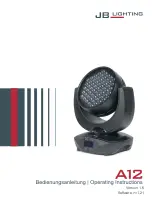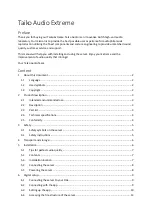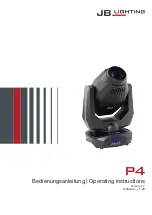
CRIRES User Manual
Doc. Number: ESO-254264
Doc. Version: P109.4
Issued on:
2021-12-01
Page:
27 of 99
Document Classification: ESO Internal Use [Confidential for Non-ESO Staff]
3.2.4 The Spectro-Polarimetry Unit (SPU)
The new polarimetry module (see Figure 20) uses polarizing gratings (PGs) to split the
incoming converging beam into left- and right-circularly-polarized beams that continue along
parallel optical axes. The choice of PGs as polarizing elements is motivated by their different
behaviour at short and long wavelengths, their small thickness, the possibility of producing
large and homogeneous samples, and their modest price. The geometry of the periodic
pattern that makes up the PGs is chosen such that infrared light (with wavelength longer
than 1 μm) is deviated, while optical light is transmitted essentially unaltered. Thus, the PG
acts as a polarizing beam splitter for circular polarization without disturbing the operation of
the AO system as described by Lockhart et al. (2014). The polarimetric unit is very compact
and is installed on CRIRES calibration carriage (see Figure 16).
The polarization unit includes two circular polarisation beam-splitters for YJ and HK bands
and two beam-splitter for YJ and HK bands combined with an achromatic quarter-wave
retarder plate (QWP) for the linear polarization.
Two types of PGs are used for the CRIRES SPU:
•
HK PGs with a wavelength limits band from 1480 nm to 2540 nm
•
YJ PGs with a wavelength limits band from 960 nm to 1360 nm
The gratings are mounted on a rotating turret capable of carrying the two circular and two
linear beam-splitters each pair. Each beam-splitter unit includes two optical elements
(polarising gratings) and a rotating stage needed for beam switching. The rotation axis is
parallel to the axis of the incoming beam. It allows the positions of the two output beams to
be switched enabling calibration of the difference in throughput for the two beams.
Figure 20: Spectro-Polarimetry Unit (SPU) view from the derotator side (left) and from the
telescope side (right). Polarization optics are mounted from the side of rotating turret.
Fabry Perot
Etalon
Wavelength
calibration
Under warm optics
table,
feeds
Integrating Sphere
Frequent,
regularly
spaced,
reference
wavelength features with uniform dynamic
range from Y- to K-band.
















































